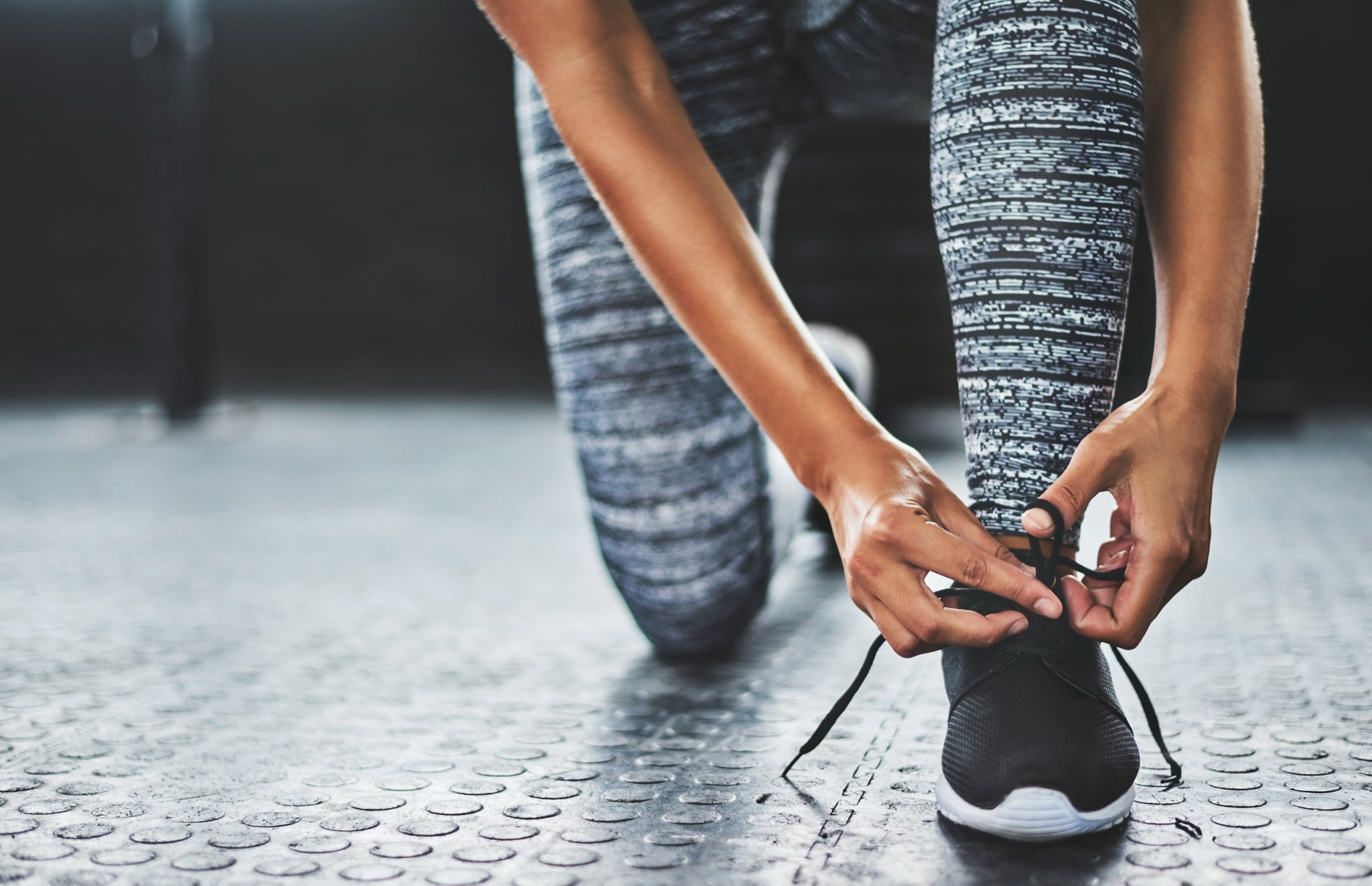Products You May Like
Whether you’re just starting to run or you’ve been hitting the pavement for years, buying new running shoes can feel like a big task. With so many things to consider, from the surfaces you run on to your individual preferences, and so many shoes out there, shopping for the right pair can be daunting. We spoke to two experts about all the factors you should consider when making a decision.
1. Consider how and where you’ll use the shoes.
According to Darcy Berard, general manager of The Running Room USA, there are several questions to ask yourself before choosing a new running shoe. What will you be doing in the shoes — just running, or walking too? Are you looking for more stability or motion control? Will you use the shoes for all of your workouts, or only when running? Are you a distance runner or more of a sprinter? These are all factors that play into choosing the shoe that’s right for you, so when you hit the store, go in with a sense of the types of workouts you like to do.
You’ll also want to think about where you’ll be using the shoes. Thankfully, those of us who alternate between the treadmill and the streets have it easy. “Running on pavement versus treadmill wouldn’t play much of a role when selecting the right shoe,” Nick Wareham, manager at Run N Fun, told POPSUGAR. However, if you’re consistently running on dirt or grass, you might want to look for a shoe that can accommodate rougher terrain. Berard agreed and recommends choosing trail shoes with a grippy tread for the latter purpose. However, she also cautioned that these shoes won’t fare as well on a treadmill, so you may need to invest in two different pairs if you alternate between the treadmill and trail runs.
“For trail runs, you’ll definitely want a more rugged outsole plus an element-resistant upper (the fabric that covers the top of your foot),” Berard said. “If you’re using your shoes in the gym and for runs, you’ll want to look for shoes that don’t have a big drop between the heel and toe.” That is, shoes that are mostly level without a ton of extra heel cushioning, a feature you’ll find in shoes that are designed for weightlifting.
Wareham also recommends choosing shoes based on whether you’re racing or doing speed workouts, as those shoes are typically a lot lighter and have a lower profile.
2. Get a gait analysis.
“Our feet coupled with how we move create a roadmap that can help us better navigate what may help us perform better,” Berard explained. That’s why experts recommend visiting a running store for a gait analysis before investing in running shoes. Factors like pronation and supination are important to consider when determining the right kind of shoes for you.
Pronation is the way that your foot hits the ground and absorbs impact. There are three different types or styles of pronation: normal pronation, overpronation, and underpronation. If you have normal pronation, you’re landing with your foot flat and straight, and pushing evenly forward off all your toes. If you have overpronation, your ankle turns slightly inward, and your foot pushes mostly off your big toe. Underpronation is the opposite and means your ankle rolls slightly outward, requiring you to push off your outer toes.
Knowing whether you have under or overpronation, and how to correct it, can make running more comfortable and help prevent injuries down the road (literally!). If you have overpronation, it’s recommended you buy a motion control or stability shoe, whereas if you have underpronation, shoes with extra cushioning are your best bet.
3. Don’t worry too much about the details.
When I first bought running shoes, I found that I preferred thicker, more supportive designs, but I wasn’t sure if those were the “right” kind of running shoes to buy. Thankfully, it turns out that when it comes to running shoes, you don’t need to sweat the small stuff so much. Apart from anything found in the gait analysis, “the level of cushioning is more of a preference than an individual need,” Wareham said. Berard agreed, adding that many long-distance runners gravitate towards more cushioned shoes to carry them through all those extra miles, whereas those doing shorter distances or speed training might prefer a firmer, more responsive shoe. “Recognize what is comfortable to you, the runner,” she said.
Both experts also agreed that there aren’t necessarily certain materials that are better for running shoes than others. “While there are some differences between the foam and cushioning systems used by each of the brands, it’s really just about preference for what feels most comfortable to you,” Wareham said. Of course, if you prefer natural or sustainable materials, that’s definitely something to keep an eye out for.
4. Make sure the shoe fits.
The perfect shoe should fit “like an extension of your foot,” Berard explained. To be more specific, Wareham recommends shoes that feel snug in the heel and comfortable though the midfoot, with some wiggle room for your toes. Your feet will swell while running, which is why it’s important to have that toe room: roughly “half a thumbnail to a full thumbnail length from the end of your longest toe to the end of the shoe,” according to Berard.
Both experts also recommend keeping an open mind and trying a variety of brands and styles. There are a lot of great running shoes out there, and when combined with information about your gait, running preferences, and running style, you’re bound to find one that works for you.
